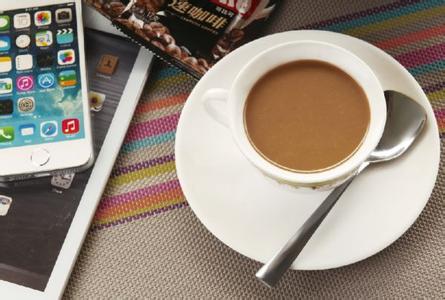The flavor of Panamanian boutique coffee with the scent of jasmine introduces Esmeralda Manor
The Panamanian flag was adopted on November 3, 1904, and is rectangular in shape, with an aspect ratio of 3:2. The flag consists of four rectangles of white, red and blue. White symbolizes peace; red and blue represent the Liberal Party and Conservative Party of Panama, respectively, and are also symbols of the unity and struggle of the two parties for the interests of the nation. The blue star on the upper left represents loyalty and integrity, and the red star on the lower right represents the authority of the law. The design of the crosshairs divided into four sections represents Panama's location at the junction of South America, North America, the Atlantic Ocean and the Pacific Ocean. Red, blue and white are the colors of the United States Star Spangled Banner, which supports Panama's independence. The flag was designed by Panama's first president Manuel Amador Guerrero. [6]
national emblem
Panama's coat of arms was first used in 1904 and consists of a brown eagle with its head held high and its wings spread.
Coat of arms of Panama
Coat of arms of Panama
A white ribbon bearing the Panamanian motto "For the Good of the World" stands above the national emblem. In the middle of the national emblem are the coffee-colored isthmus of Panama, the blue Pacific Ocean and the Caribbean Sea and the Panama Canal connecting them; under the blue sky, a bright moon has risen, and the corresponding sunset afterglow has not been exhausted, and golden light is shining, symbolizing Panama's independence is coming at the "sunset and moonrise"; the silver sword and rifle crossed in the upper left have experienced the ups and downs of hundreds of years of war on Panamanian land; The T-pick and shovel on the upper right represent the call of active construction and hard work issued by the country; the horn overflowing from the lower gold coin and the golden double-wing flywheel symbolize the progress and prosperity of the country. Four flags decorated around the national emblem, the top nine gold stars represent Panama's nine provinces
Panama Coffee is known for its summertime of Emerald Estate, and Emerald Estate is also known for its Boquete region in Chiriqui province. Boquete is a town of Chiriqui in the province of Riquí, located near the border between Panama and Costa Rica, close to the famous Baru Baru volcano, beautiful scenery, rich soil, climate and soil are very suitable for producing high-quality coffee. This is due not only to the excellent ecological conditions of Panama's Poquet region and the fertile volcanic ash soil of the Baru volcanic field. Another important factor is that the microclimate in the Poquet highlands of Panama is a unique and important resource for fine coffee in the Poquet region; this is the environment of Panama from east to west, which allows cold air currents to converge above 6500 feet through the Central Mountains, thus creating a variety of microclimates in the Poquet region, making its temperature and rainfall very suitable for plant growth, so coffee trees grown here are in good condition.
In such a unique planting environment in Poquete, naturally there will not be only such a jade rose summer, regardless of flavor quality and value of coffee king will be expensive; but every day to drink rose summer I think it is more extravagant, and even if there is no economic pressure, it is not like eating shark fin bear paw every day. Coffee, too, needs to be consumed widely to enjoy the pleasure of tasting coffee. In 1931, it was quietly transported from the Guixia Mountains in southwest Ethiopia.(Geisha Mountain, which happens to be the same as Japanese geisha) exported to Kenya, Tanzania and Costa Rica, transplanted to Panama in the 1960s, and then survived for nearly half a century before it became a blockbuster, defeating the ever-winning varieties such as Boben, Kadura, Kaduai and Tibika, and winning the first prize in the 2005, 2006 and 2007 Panama National Treasure Bean Cup Test Competition. In 2007, the International Famous Bean Cup sponsored by the American Fine Coffee Association (SCAA) won the championship again, and the bidding price was sold at 130 US dollars per pound, setting a record for the highest price in the history of competition beans. It is reported that the subsequent Panama National Treasure Bean Competition will be divided into two groups: Rose Summer and Non-Rose Summer, so as not to be robbed of the glory of other varieties by Rose Summer. Guixia belongs to the Tibika family, but after leaving Ethiopia for more than 70 years, she became famous. It also fulfilled the saying that Ethiopia is the treasure house of Arabica genes. Any donation of a variety abroad is enough to make waves in the coffee market.

Important Notice :
前街咖啡 FrontStreet Coffee has moved to new addredd:
FrontStreet Coffee Address: 315,Donghua East Road,GuangZhou
Tel:020 38364473
- Prev

An introduction to the coffee flavor and taste of Costa Rica's Saint Roman Manor with ideal acidity and unique strong flavor.
1502 C. Columbus discovered the coast of Costa Rica on his fourth voyage. Since then, the Spanish colonists have invaded many times. The city of Catago was founded in 1563 and Costa Rica was colonized by Spain and placed under the jurisdiction of the Governor's Office of Guatemala. During the colonial period, under the cruel enslavement and oppression of the Spanish colonists, the Indians were almost wiped out and there was little labor available for enslavement.
- Next

Introduction to Fine Coffee with rich flavor and taste in Lazmus Manor, Colombia
In 1501, the Spaniard R.de Bastidas first reached the northern coast of Colombia and founded the city of Santa Marta in 1525. In 1533, P.de Eredia established Cartagena. In 1535, G. Simone de Xada led the Spanish colonial army into the interior of Colombia, conquered the Chibucha, established the city of Bogota, and Colombia became a Spanish colony. At the beginning
Related
- Does Rose Summer choose Blue, Green or Red? Detailed explanation of Rose Summer Coffee plots and Classification in Panamanian Jade Manor
- What is the difference between the origin, producing area, processing plant, cooperative and manor of coffee beans?
- How fine does the espresso powder fit? how to grind the espresso?
- Sca coffee roasting degree color card coffee roasting degree 8 roasting color values what do you mean?
- The practice of lattes: how to make lattes at home
- Introduction to Indonesian Fine Coffee beans-- Java Coffee producing area of Indonesian Arabica Coffee
- How much will the flavor of light and medium roasted rose summer be expressed? What baking level is rose summer suitable for?
- Introduction to the characteristics of washing, sun-drying or wet-planing coffee commonly used in Mantenin, Indonesia
- Price characteristics of Arabica Coffee Bean Starbucks introduction to Manning Coffee Bean Taste producing area Variety Manor
- What is the authentic Yega flavor? What are the flavor characteristics of the really excellent Yejasuffi coffee beans?

